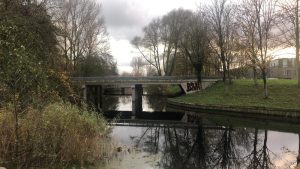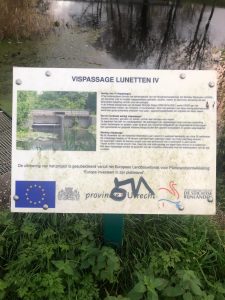Construction of 14 fish passages
In the water system within the management area of the De Stichtse Rijnlanden Water Board (HDSR), there are barriers (pumps that are difficult or impossible to pass through fish, weirs, inlets and dams) that form a burden on the ecology. Water Directive Framework (WFD 2016-2021) HDSR is putting work into the development of at least 14 structures that are passable by fish. By minimizing fish migration bottlenecks, a large hinterland is opened up for pole, boosting growth opportunities and migration of these species.
Usefulness and necessity of constructing fish passages
Weirs, dams, pumping stations and locks form a barrier for fish. They limit the habitat and food area. The construction of fish passages provides a connection between the open water and the polders, but above all it also increases the habitat of so-called polder fish. A varied and healthy fish stock contributes to a healthy ecosystem that ensures good water quality.
Operation of the fish pass
This inlet work of the Hollandse Waterlinie has a difference in water level of approximately 50 centimeters. The fish pass consists of 10 chambers with openings through which water flows from top to bottom. The gaps between the rooms provide a difference of 5 centimeters in each room. Fish can go with the current, but are also strong enough to swim against it. This fish passage connects the canals of the 4 lunettes with the water system of the Lunetten district.
The implementation of the project is subsidized by the European Agricultural Fund for Rural Development: “Europe invests in its countryside”.


